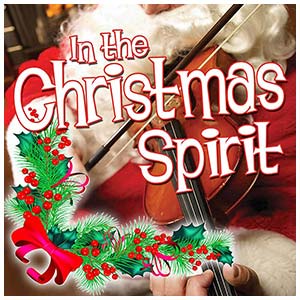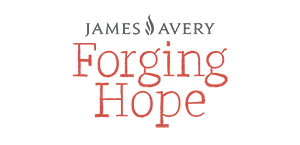Jingle Bells Forever
arr., Robert W. Smith
March of the Toys from “Babes in Toyland”
Victor Herbert (1859-1924)
A Canadian Brass Christmas
arr., Calvin Custer (1848 – 1956)
Hanukkah Festival Overture
arr., Calvin Custer (1848 – 1956)
Selected Movements from Gloria
Antonio Lucio Vivaldi (1678 – 1741)
Kara Joy Baker, Haley Dove Montoya, Elizabeth Rose Williams, Sopranos
Many Moods of Christmas, Suite 1
arr., Robert Shaw

Gene Dowdy
Conductor & Artistic Director
Conductor’s Letter
Dear Friends,
Our second concert is our annual holiday performance and includes our Grand Symphony Chorus alongside the Symphony of the Hills. The chorus master, Mr. Michael Kahl, is on the music faculty at Schreiner University. Together we will present some seasonal masterworks for orchestra and chorus that is sure to bring to you and your family the spirit of joy, thanksgiving, and celebration that is Christmas.
We will open the concert with holiday favorites including a patriotic rendition of Jingle Bells, “Jingle Bells Forever,” music from “Babes in Toyland by Victor Herbert, and even music inspired by the world-renowned arrangers of the Canadian Brass. As is tradition, the orchestra will also bring two Hanukkah-inspired works to the table, Hatikvah, the Israeli national anthem, and “Hanukkah Festival Overture.”
The second half brings our chorus and orchestra to the Cailloux stage for Vivaldi’s landmark “Gloria,” one of the most popular Christmas works for orchestra and chorus. Finally, we will perform the eminent choral conductor Robert Shaw’s “Many Moods Suite 1.” This selection features some of the season’s most popular carols and hymns.
Our annual holiday concert promises to be a sell-out, so please get your season tickets ordered!
With sincere thanks for your support,
Gene Dowdy, Conductor & Artistic Director
Concert Notes
For this Christmas concert and our last concert of 2019, the Symphony of the Hills will present joyous renditions of Holiday music along with an elegant religious composition by Vivaldi. It is intended that you leave the concert this evening with a feeling of nostalgia, wonder and peacefulness.
Jingle Bells Forever
arr., Robert W. Smith
Here’s a rousing version of Jingle Bells
March of the Toys from “Babes in Toyland”
Victor Herbert
(1859-1924)
Victor Herbert is a name that might be familiar to many of us, as it is associated with a repertoire of (mostly popular) music in the early 20th century. Herbert; originally born in Ireland and raised in Stuttgart, Germany, was a cellist, conductor and composer here in the U. S. He and his opera-singer wife Therese Förster emigrated to the U.S. in 1886 when both were hired by the Metropolitan Opera. Herbert performed at the Met while also teaching at the National Conservatory of Music. Together with developing several popular compositions, he led the Pittsburgh Symphony from 1898 to 1904 and then founded the Victor Herbert Orchestra, which performed light orchestral music and which he conducted through the rest of his life. His orchestra made many acoustical recordings for Edison Records from 1909 to 1911, and for the Victor Talking Machine Company from 1911 to 1923. Herbert served also as a cello soloist in several Victor recordings.
“Babes in Toyland” is an operetta Herbert composed in 1903 and which premiered that year at the Majestic Theater on Broadway. The piece brings various characters from Mother Goose nursery rhymes into a Christmas-themed musical extravaganza. From the operetta comes March of the Toys, often accompanying marching toys dressed in red band uniforms.
A Canadian Brass Christmas
arr., Calvin Custer (1848 – 1956)
This arrangement features rousing trumpets, trombone, tuba and French horn, with favorites such as “Ding Dong! Merrily on High,” “I Saw Three Ships,”…
Selected Movements from Gloria
Antonio Lucio Vivaldi (1678 – 1741)
Haley Dove Montoya and Elizabeth Rose Williams, Sopranos
The wonderfully sunny nature of this Gloria, with its distinctive melodies and rhythms, is the best known and most popular of the three Glorias that Vivaldi composed. It is characteristic of all of Vivaldi’s music, giving it an immediate and universal appeal. This piece was probably written about 1715, while Vivaldi was employed at the children’s orphanage Pio Ospedale della Pietà, known for its advanced choral ensemble. The opening movement is a joyous chorus, with trumpet and oboe obligato. The extensive orchestral introduction establishes two simple motifs, one of octave leaps, the other a short instrumental refrain. The choir enters in chorale-like fashion, declaiming the text in regular rhythms that contrast with the orchestral refrains containing most of the strictly instrumental melody.
A very familiar figure of the Baroque period is Antonio Vivaldi, born in Venice, regarded as one of the greatest composers of that era. Even during his lifetime, his influence extended across the whole of Europe. He was a master violinist and a prodigious composer, as well as a teacher and priest. He composed many concertos for the violin and a variety of other instruments, as well as sacred choral works and more than forty operas.
Shortly after he was ordained as a Roman Catholic Priest in 1703, Vivaldi joined the convent/home Ospedale della Pietà (Hospice of Compassion) for abandoned girls in Venice. (The historical record indicates that most of the girls were the illegitimate daughters of Venetian noblemen and their mistresses.) Over a period of a very productive 30 years, Vivaldi composed, directed and taught music at the Ospedale, while also serving a number of short-term positions funded by patrons in Mantua and Rome. It was during his term in Mantua, from around 1717 to 1721, that he wrote his four-part masterpiece, The Four Seasons.
In addition to his composing for the all-female chorale ensembles of the Ospedale, he churned out more than 500 concertos, 46 operas, a large body of sacred choral music, sinfonias, about 90 sonatas and a like amount of chamber music. About 350 of his concertos are for solo instrument and strings, of which 230 are for violin. The continuing effort of cataloguing his works has been, and continues to be, a monumental task. Of the almost 850 documented and authenticated Vivaldi compositions, many have yet to be uncovered. Those compositions extant comprise 27 large volumes.
Within the body of sacred chorale works, Vivaldi wrote at least three settings of the hymn Gloria in excelsis Deo, whose words date probably from the 4th Century and are an integral part of the Ordinary Mass. Only two of his Glorias, each with 12 movements, have survived. This piece was relatively obscure until 1939 when it was revived by Alfredo Casella, who single-handedly promoted Vivaldi’s music during “Vivaldi Week” in Siena, Italy.
Many Moods of Christmas, Suite 1
arr., Robert Shaw
Concert Notes by Jim Adams



